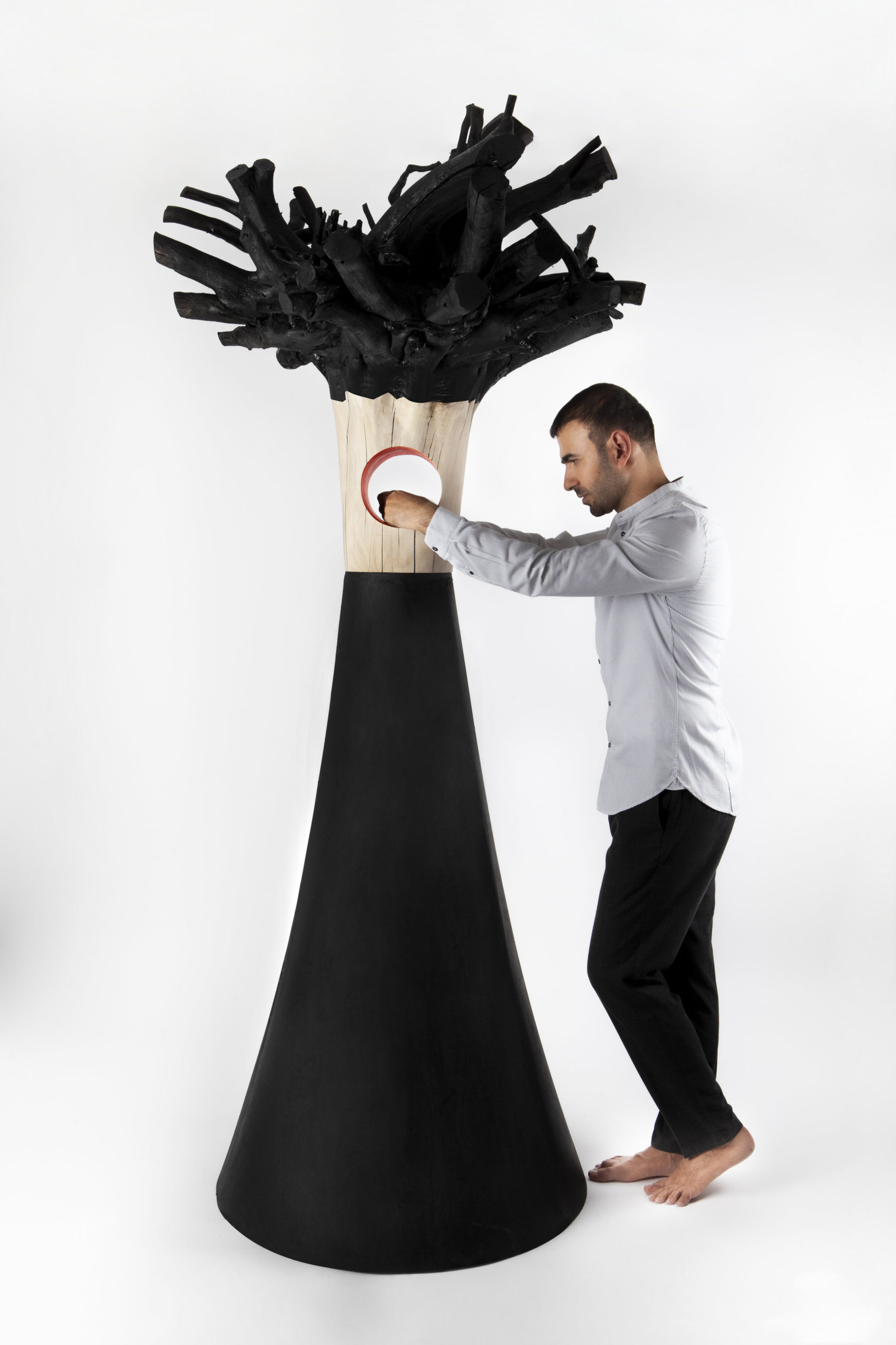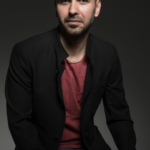Daily Sabah

Turkish artist opens up to world with his ‘Intellect’ in Moscow

Ahmet Yiğider’s newest exhibition 'Intellect' offers insight into human development from different aspects with a touch on nature in the Russian capital
It is always hard to narrow down the boundaries of interdisciplinary art. While it may simply be described as the art form creating a relationship across various disciplines, using different materials and processes to generate a piece is the essential part of this combination. But the important thing is that interdisciplinary artists cross boundaries, explore new ideas and gain new experiences.
Ahmet Yiğider, as an interdisciplinary artist, embraces new ideas and angles that can be traced in his pieces focusing on art and design. With his versatile creativity that feeds on his background in engineering, the Turkish artist produces unique approaches that transcend the boundaries of the art of sculpture. The sculpture series that he prepared using dead trees and industrial trees produced with environmentally friendly standards at his latest show “Intellect” may be a good example of his oeuvre blended with these original perspectives.
Although human progress and the future of humans are a focal point for many contemporary artists, especially recently with complicated, hot topics like climate change and impacts and risks of artificial intelligence, Yiğider looks at the development of human beings from totally different angles and contexts in his sculptures in this show. But is it really possible to say something different about such an issue in the present situation of the world?
It is cliche to say that human progress against nature, or “modernization” to be more precise, corrupts people. Instead of sticking to this cliche, Yiğider goes deeper in his mind and scrutinizes how humanity has failed in terms of universal humanitarian issues although his cumulative knowledge provides significant progress in his dominance over nature and his perception of the universe. Concentrating on our cumulative knowledge, Yiğider neither looks for an answer or a reason for this failure nor unveils centurieslong, inconsiderate human behaviors. Instead, he evaluates this failure on humanitarian subjects as an “anomaly,” which makes his artistic approach authentic. This anomalous side of humanity finds a voice in the form of amorphous pieces in “Intellectual.” These amorphous sculptures reflect the inner world of the artist and how the issue he questions has evoked pessimistic and shocking feelings within his soul. Also, they intriguingly bring an eerie take from nature to the exhibition while meeting with and struggling against the artist’s minimal lines from time to time.


“Intellectual” was launched at the beginning of April in the Fine Art Gallery of Moscow’s Winzavod Center for Contemporary Art, one of Russia’s most prestigious contemporary art galleries, marking Yiğider’s introduction to the international art scene. The exhibition also demonstrates that the Russian capital transformed into an inviting art destination thanks to the efforts of its new-age art galleries. “Moscow has a unique aura and strong spirit. Fine Art Gallery, on the other hand, is a highly respected and prestigious art institution with more than 100 artists from Russian contemporary art. This is why I was so excited and willing after being invited to open my exhibition in the gallery despite all the challenges of the pandemic,” Yiğider said.
With this show, the artist’s amorphous pieces do not only reveal his distinctive stance as an artist with an exclusive point of view but also carry some traces from Yiğider’s life to the Russian lands. The artist’s interest in nature and human relationships reflected in the exhibition, for example, are actually rooted in the first periods of his life. His birthplace, northeastern Artvin province, and his hometown in eastern Erzurum province in Turkey were the initial determinants of the development of awareness on this issue for him with their breathtaking natural wonders. Saying that he finds himself surrounded by nature whenever he closes his eyes, Yiğider stated that he begins to truly feel and comprehend in such moments. “Then, I sense an urge to express my experience. This is when and where art begins for me. If there are people, there will always be a need for expression, which will bear art,” he continued.
Besides, the neat, elaborated lines on his sculptures that capture the visitors’ imagination take their sources from the artist’s engineering skills. His knowledge in this field contributed to his artistic creations, helping him understand the material and develop an original technic, according to Yiğider.
Fight for survival
After exploring new approaches with the artist’s first amorphous sculpture series, the second series in “Intellectual,” which Yiğider named “Destructive Anatomies,” offers new experiences through reduced biology. While applying certain plastic interventions on wooden surfaces in these sculptures, the artist sometimes separates or isolates these solid surfaces using colors. He also manages to create a balance with the color mixtures he improved with special pigments that do not hide the nature of the wood.
Yiğider says that this second series seeks to fuse the human effort to exist and the anatomy in a single conceptual and formal language. Unlike the abstraction or simple simplification approach, it expresses the desire to purge anatomical lines from many of the basic and common distinctive elements, to reach the lowest point of anatomy’s existence and to seek new images that bless seeing and thinking.
“Intellectual” will host international art enthusiasts in the flourishing atmosphere of Moscow, which once considered lackluster drawing little attention and respect from the West but turned into a global cultural center, until May 9.

Irem Yasar

